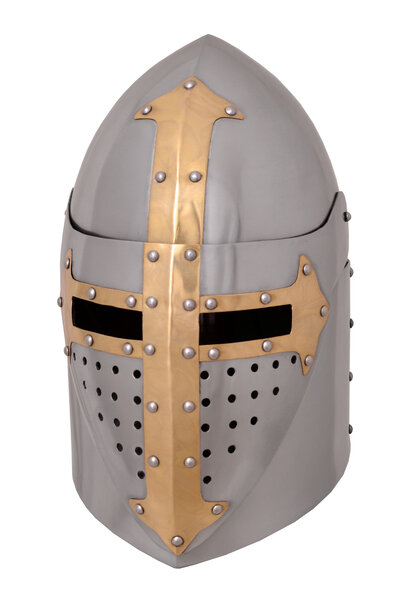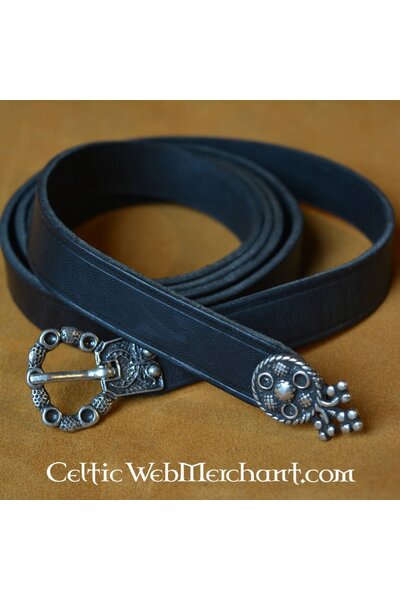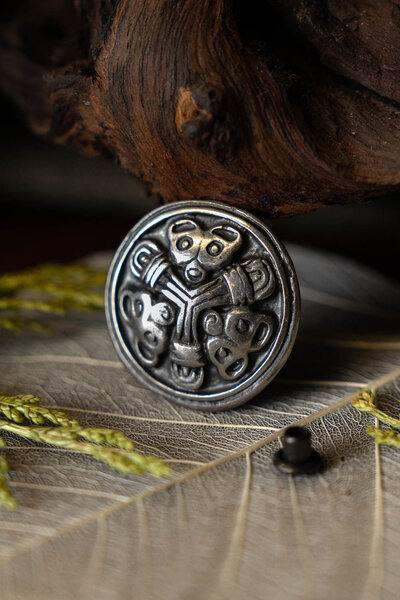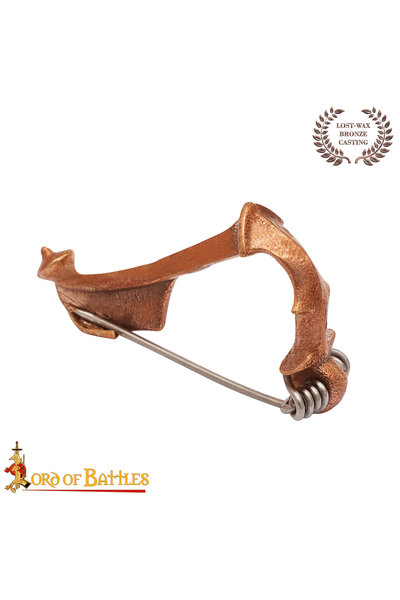Product description
The pourpoint was a garment worn by noblemen in the late 14th century in both civilian and military situations. It marked a significant shift in Western fashion as it led to a move away from the boxy silhouettes of ancient and medieval clothing into the more elaborate clothing of the modern period, which began to develop in the 15th century. The pourpoint was originally designed as a military garment, cutting into the waist to prepare the body for the breastplate, which rested between the ribs and the pelvis. This shifted the weight of the armor from the shoulders to the hips.
Instead of wearing the armor's weight on the shoulders, late medieval knights opted to distribute the weight of their armor across their bodies. Eventually, this garment was also worn by noblemen in their daily lives as outerwear (over the undertunic), replacing the tunic.
This pourpoint is perfect for medieval reenactment. It has 7 pairs of aiglets around the waist and 2 pairs of aiglets for fastening the chausses. This pourpoint is made from 100% recycled wool and lined with 100% linen. Note: the images show a full linen version, while this is a wool version. The blue wool is slightly darker.
The fibers of wool trap air, making it a natural insulator, helping you to stay warm.
It’s breathable, which means it keeps you warm without overheating.
Wool is warm, even when wet, and can shed water, making it a good choice to wear during rain.
While not waterproof, wool can absorb up to 30% of its weight in water before it feels wet, which keeps you dry for longer in rain.
It’s a durable fabric.
Wool is naturally flame-resistant and safer to wear than polyester during living history or historical events featuring campfires for warmth and cooking.
Details
Material: 100% recycled wool with a 100% linen lining;
Color: Blue;
Sizes: S to XXL;
Washing: Hand wash in cold water or use a delicate machine wash cycle;
Drying: Air dry by laying flat in the shade to preserve color and shape.;
Ironing: Iron on low heat if necessary, or use steam to remove wrinkles.;
Spot Cleaning: For small stains, gently dab with a damp cloth and mild detergent.;
Based on historical originals
















